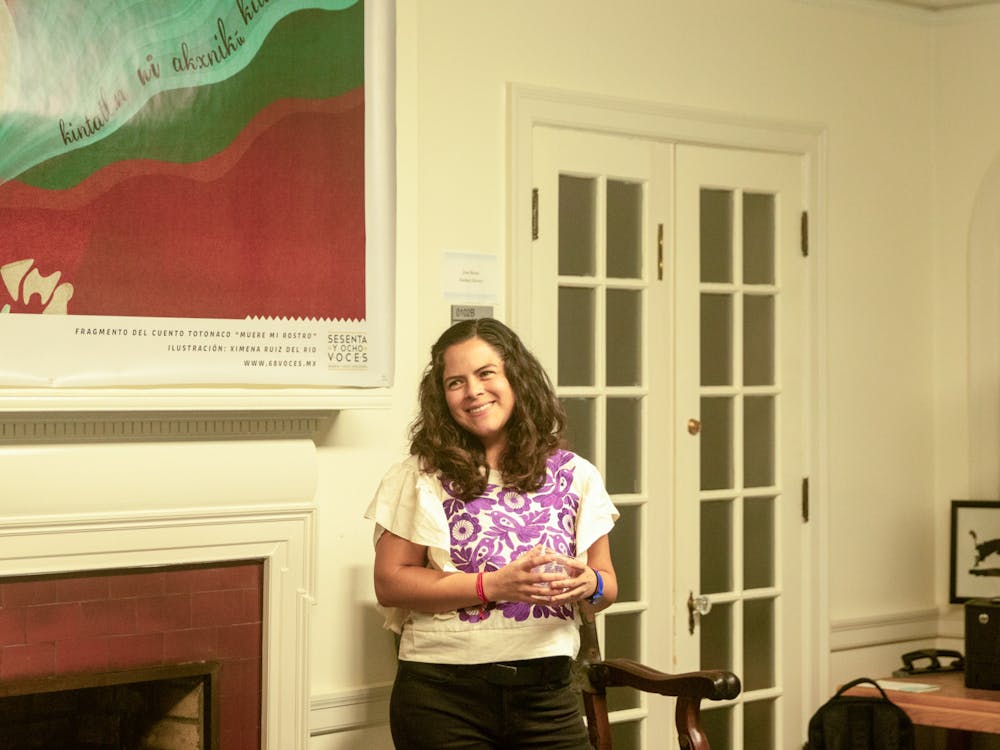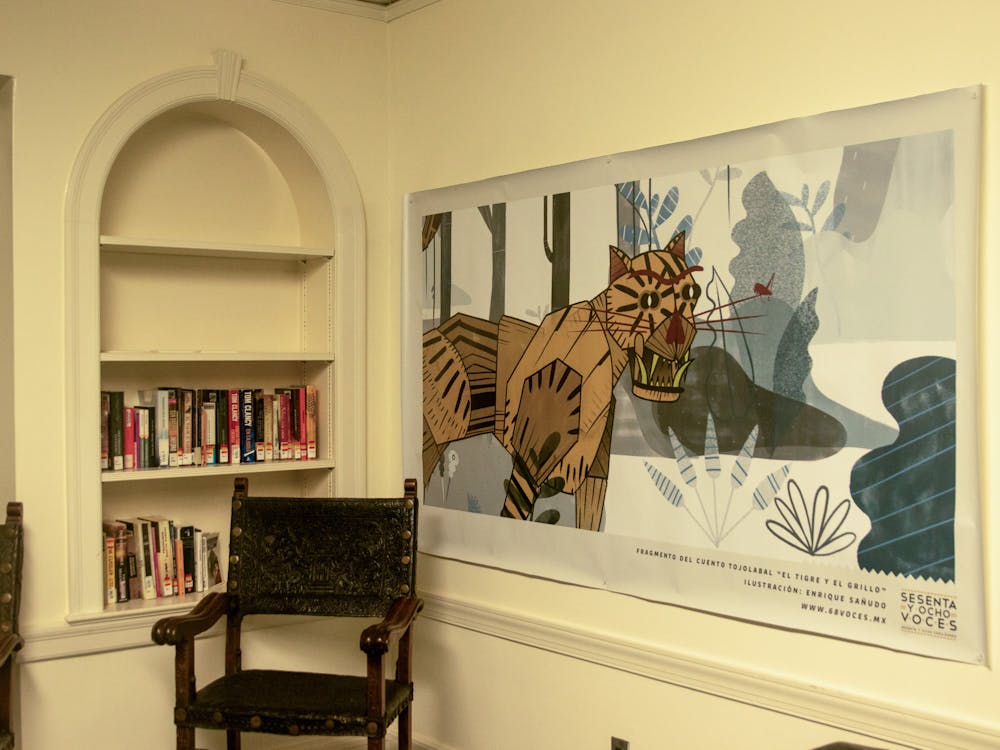Today, Spanish is the de facto national language of Mexico, but that wasn’t always the case. Before the arrival of the conquistadors in the 16th century, Mexico lacked a dominant language, instead relying on multiple language families and dozens of languages. Even today, at least 63 Indigenous languages are still widely spoken throughout Mexico, though most remain marginalized. Gabriela Badillo is trying to change that.
Gabriela Badillo visited Duke from Nov. 4 through Nov. 10 in a brief residency hosted by the Duke Center for Latin American and Caribbean Studies as part of their Linguistic Justice in the Americas series. During her residency, she exhibited her poster series “68 voces, 68 corazones (68 voices, 68 hearts)” and presented on her ongoing project to create a film version of the series, two projects that she’s been working on for the last decade. Badillo also visited a local diaspora community that uses the Chatino language, in hopes of launching an effort to include their language in her work.
“68 voces” is a series of posters telling the story of 68 Indigenous languages of Mexico, which are a composite of 364 language subsets. The posters explore tales and legends told by speakers of these languages through colorful drawings. One such example is “How Did the Rabbit Get to the Moon?,” a Huasteco language tale whose original name is “T’ilab: jant’inij ti ulit’s an ko’y al a it’s.”
Badillo also exhibited selections from her ongoing project that turns the posters and tales into short, animated tales spoken in the native languages and subtitled in Spanish, English or both. During her first talk, she showed a set of films that use languages like Nahuatl, one of the most common Indigenous languages, and a dialect of Mayan, a language from her family’s home region of the Yucatan. She also talked about the inspiration behind selecting different stories and the struggles inherent in making the exhibit and finding ways to capture Indigenous experiences.
Badillo connected the project to her own Indigenous heritage and the linguistic struggles her family faced. She told the story of the project's early days, what she and her team had accomplished since then and how they are continuing to make new impacts through forays into puppetry and resources for writing in native languages. During the Q&A session, she mentioned how positively native communities had reacted to seeing the finished products, with it being the first time many had seen their native tongue in the media.
The motivation behind Badillo’s project is threefold. First, she hopes to draw attention to these languages, many of which are in danger of dying out and being lost to history. Second, she wants to help fight discrimination, as the Indigenous communities within Mexico are often marginalized, in part because of their use of Indigenous languages. Finally, she wants to create pride in the languages for their native speakers, while showing them that they can and should use them to link generations and protect their oral tradition.

The films shown at the first event were all interesting and compelling, animated in a beautiful and fantastical paper style. The effort to pick diverse, representative stories, involving heavy input from the elders and youths of their communities, showed in the quality of the stories and the care put into presenting them. They also expertly balanced telling a story that was accessible to non-speakers while centering native languages and perspectives. The art was similarly wonderful, capturing a number of styles and subcultures. The diversity of art on display mirrored the richness and diversity of Indigenous Mexican cultures without being overwhelming.
Overall, the residency — and Badillo’s work — offered a lens on something often overlooked: language. While people use language every single day, they don’t often think about the language they are speaking. As Badillo discussed, a language encompasses ways of knowing, wisdom, traditions and perspectives on the world. The exhibit highlighted the value and richness of Indigenous languages, regardless of size, a message that’s become increasingly important as globalization threatens small languages around the world.
Get The Chronicle straight to your inbox
Sign up for our weekly newsletter. Cancel at any time.
Zev van Zanten is a Trinity junior and recess editor of The Chronicle's 120th volume.

